Discover Sicily through its iconic dishes. Explore 7 must-try foods, from arancini to cannoli, and find top dining spots, including Michelin-starred restaurants and hidden street food gems.

Sicily, the Mediterranean’s largest island, has its own well-defined culture drawn from thousands of years of history. From the Greeks and Romans to the Arabs and Normans, these influences have melded over centuries, leaving behind their architecture, influences on the language, and contributions to the cuisine. This is one of those places in the world where you cannot understand the culture divorced from the food – which at Cerca, makes it one of our favorite places in the world. Here are seven iconic foods that offer a window into the island’s soul…
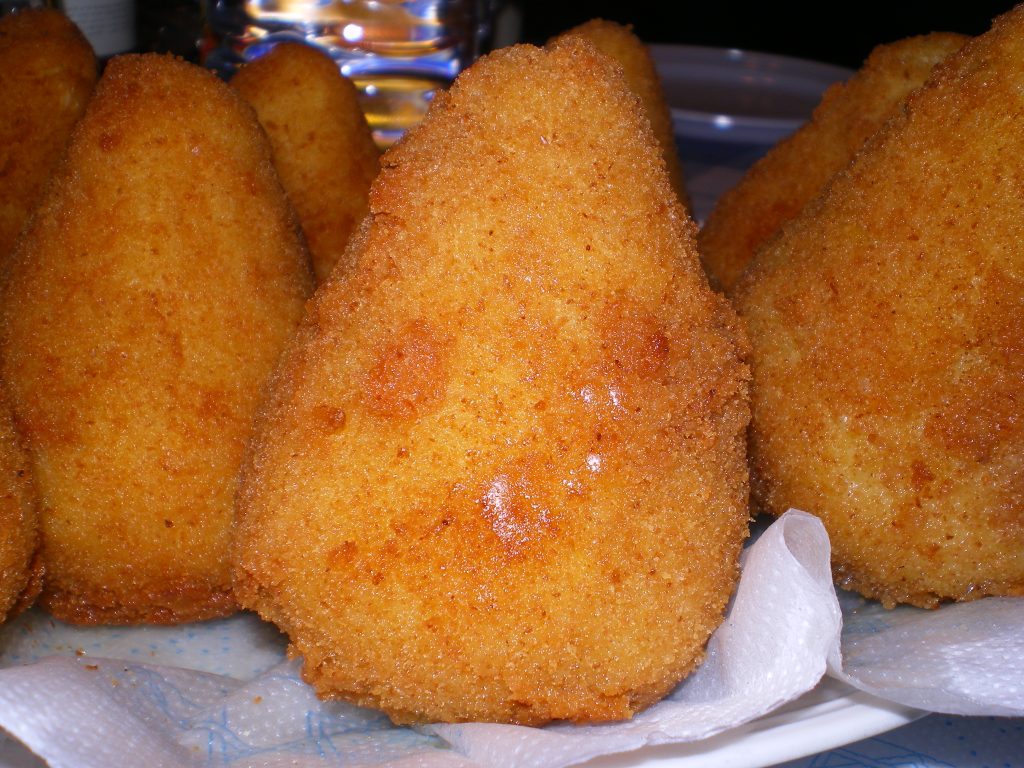
1. Arancini (Fried Rice Balls)
Arancini, derived from the Italian word for “little oranges,” are golden, breaded and fried rice balls traditionally filled with ragù (meat sauce), mozzarella, and peas. Their origins trace back to the 10th century during Arab rule in Sicily, when rice and saffron were introduced to the island. The practice of rolling rice into balls and frying them made the dish portable, ideal for travelers and laborers.
The two main styles of arancini reflect Sicily’s regional diversity:
Western Sicily (Palermo-style): Typically round in shape and often filled with ragù (meat sauce), peas, and mozzarella.
Eastern Sicily (Catania-style): Often cone-shaped, resembling the nearby Mount Etna, and sometimes filled with more tomato-heavy sauces or other variations like pistachio or seafood.
Over the centuries, arancini became a beloved Sicilian street food, especially eaten on Santa Lucia Day (December 13th) when Sicilians traditionally avoid bread and pasta in remembrance of a famine. Today, they are found in cafés, bakeries, and street food stalls across the island, each with its own regional twist.
Where:
Street Food: In Palermo, head to I Cuochini, a historic eatery renowned for its traditional arancini flavored with saffron and stuffed with meat sauce.
Fine Dining: Gagini in Palermo, located in a 16th century artists’ studio, where arancini can sometimes be found on a tasting menu featuring carpaccio, oysters, and artichokes.
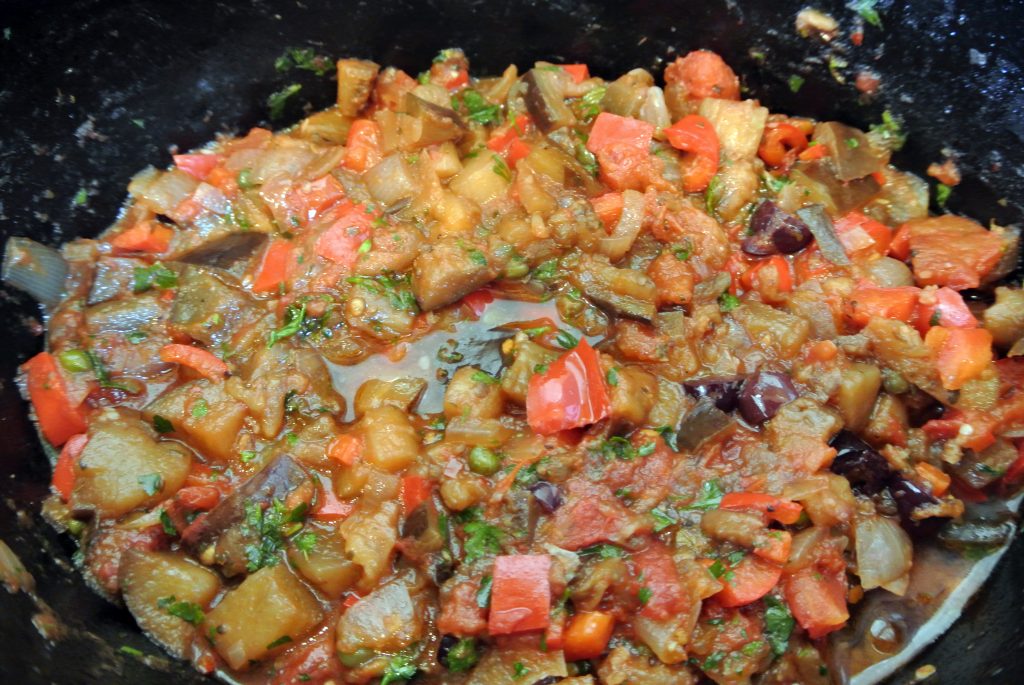
2. Caponata (Eggplant Salad)
Caponata is a sweet and sour eggplant dish, enriched with tomatoes, celery, olives, and capers. Its roots are debated; some believe it evolved from a Catalan dish called “caponada,” while others trace it to the Latin “caupona,” meaning tavern.
It’s a deceptively simple dish – created through a harmony of slow-cooked vegetables in good olive oil. The key to an authentic caponata is agrodolce, a traditional Sicilian sweet-and-sour sauce. This comes from a carefully measured mix of vinegar and sugar—typically red wine vinegar and a spoonful of sugar—which caramelizes the vegetables while adding a tangy contrast. The secret is in getting the balance just right: too much vinegar and the dish becomes too sharp, too little and it lacks depth.
The other secret to good caponata is to cook each individual vegetable separately, so that it caramlizes while maintaining its flavor identity, then mix them all together, and chill it for 24 hours – it’s always better the next day.
Where:
Traditional: Antica Focacceria San Francesco in Palermo serves a classic version that’s been perfected over generations.
Off-the-Beaten-Path: In the village of Chiaramonte Gulfi, Majore offers a rustic setting, traditional Sicilian food based on local produce, and a deep wine cellar.
Cooking Class:
Participate in a culinary workshop at Anna Tasca Lanza Cooking School in Vallelunga Pratameno where you can stay for 4 nights on the farm and immerse yourself in the food culture of Sicily.
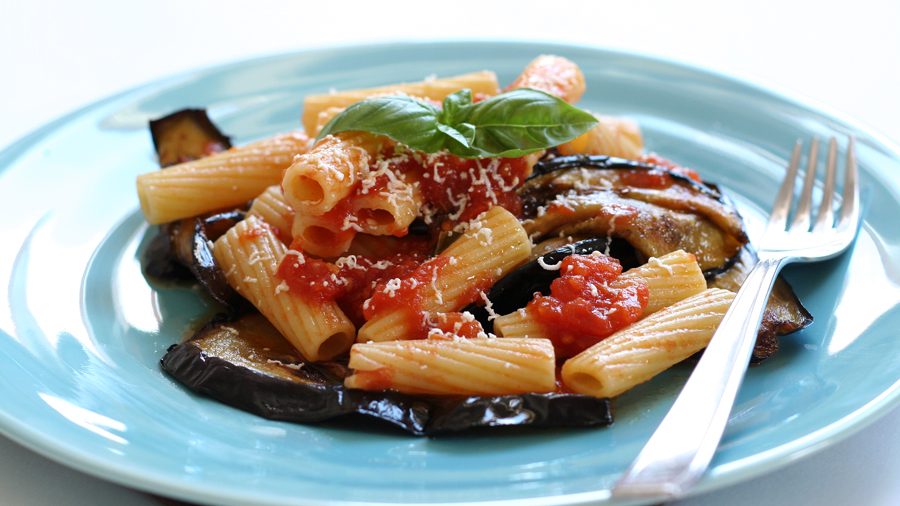
3. Pasta alla Norma
Originating from Catania, Pasta alla Norma is a tribute to the opera “Norma” by local composer Vincenzo Bellini. This dish combines pasta with fried eggplant, tomato sauce, basil, and salted ricotta cheese, embodying the simplicity and richness of Sicilian ingredients.
Legend has it that Nino Martoglio, a Sicilian playwright and poet, once tasted this pasta dish and exclaimed:
“Chista è ‘na vera Norma!”
(This is a real Norma!)
He compared the dish’s perfection to Bellini’s musical masterpiece, and the name stuck.
Pasta alla Norma was never a dish for the elite; it was born in home kitchens, using simple and affordable ingredients. Even today, it remains a comfort food, enjoyed across Sicily and beyond. Many locals insist that the best version is always made by a Sicilian nonna (grandmother).
The dish is often associated with summer, when eggplants are at their peak and Sicilians gather around the table for long, leisurely meals.
Where:
Local Favorite: Trattoria da Antonio in Catania is famed for its authentic Pasta alla Norma. To be fair, plenty of visitors find this place, but tucked away from the city center as it is, it still feels like stumbling across a hidden gem.
One Michelin Star: Ristorante Coria in Catania presents elevated renditions of classic Sicilian dishes. (Get the quail.)

4. Cannoli (Sicilian Pastry)
Cannoli are tubular pastries filled with sweetened ricotta cheese, often studded with chocolate chips or candied fruit. Believed to have been created during the Arab occupation, these indulgent treats were originally prepared for Carnevale, symbolizing fertility and festivity. Today, they are enjoyed year-round and have become emblematic of Sicilian desserts.
Like many Sicilian foods, cannoli differ by region, with the island’s two largest cities—Palermo and Catania—both claiming superiority.
Palermo-Style Cannoli:
The classic version, with a crunchy shell and a creamy ricotta filling, often flavored with vanilla or cinnamon. The ends are decorated with candied orange peel, chopped pistachios, or chocolate chips.
Catania-Style Cannoli:
A more decadent version, filled only with sheep’s milk ricotta and sweetened with honey. Instead of orange peel, whole cherries or even a dusting of cocoa powder are used. Some Catanese bakeries dip their shells partially in chocolate.
See Cerca’s article on the best Cannoli across the globe!
Where:
Historic Bakery: Pasticceria Savia in Catania has been crafting traditional cannoli since 1897.
Hidden Gem: Euro Bar in Dattilo, a small village near Trapani, is famed for its oversized and delectable cannoli.

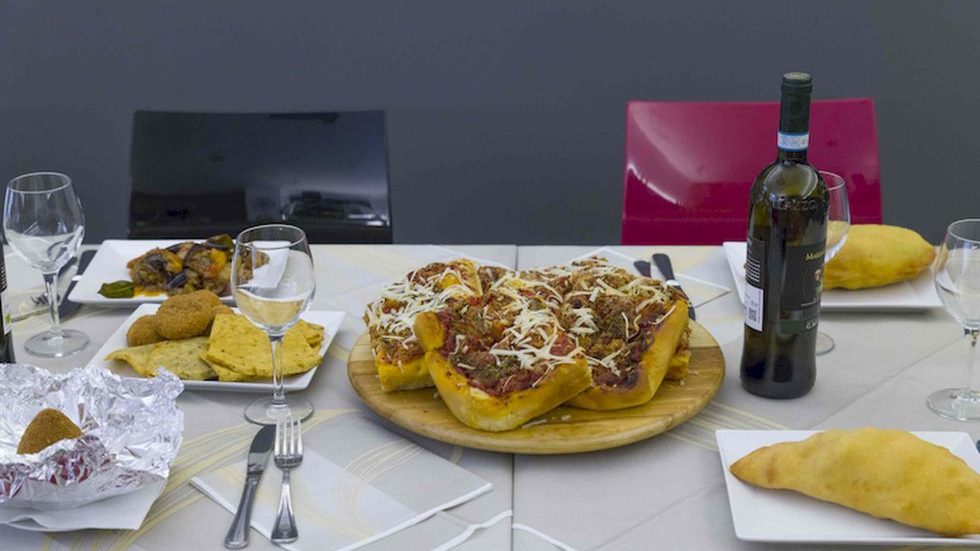
5. Sfincione (Sicilian Pizza)
We have arrived at pizza. There is, of course, epic and storied debates in Italy about the best version of pizza, from Rome to Naples to Palermo. The glorious part of the debate is that there will never be a consensus, and the only possible solution is to try them all for yourself and decide!
Sfincione is a thick, soft pizza topped with tomato sauce, onions, anchovies, oregano, and breadcrumbs.
The origins of sfincione date back at least 300 years, but its culinary DNA is far older, tracing back to both Arab and Roman influences.
The word sfincione comes from the Latin “spongia” (sponge) or the Arabic “isfang”, both referring to its light, airy, spongy dough. Unlike traditional Italian pizza, sfincione has a texture more like a focaccia—thick, fluffy, and perfect for soaking up rich toppings.
Sicily’s 9th-century Arab rulers introduced new ingredients and baking techniques, including spiced bread, onions, and oily flatbreads. They also brought the tradition of using saffron and anchovies in cooking, which found their way into sfincione’s signature sweet-savory topping.
Sfincione’s transformation into the dish we know today is credited to Sicilian nuns. During the 17th and 18th centuries, nuns in Palermo’s San Vito convent developed sfincione as a Christmas specialty—a festive upgrade from everyday bread, enriched with olive oil, tomatoes, and cheese.
Over time, Palermo’s street vendors adopted it, selling sfincione from pushcarts, often wrapped in brown paper. Today, it remains Palermo’s signature street pizza.
Where:
Local Market: At Palermo’s Mercato di Ballarò, street vendors serve freshly baked sfincione that’s both affordable and authentic.
Traditional: Sicilia Street Food in Catania is a family own restaurant specializing in Sicilian traditions.
Also: Check out the cooking classes at Cooking Sicily for traditional workshops.
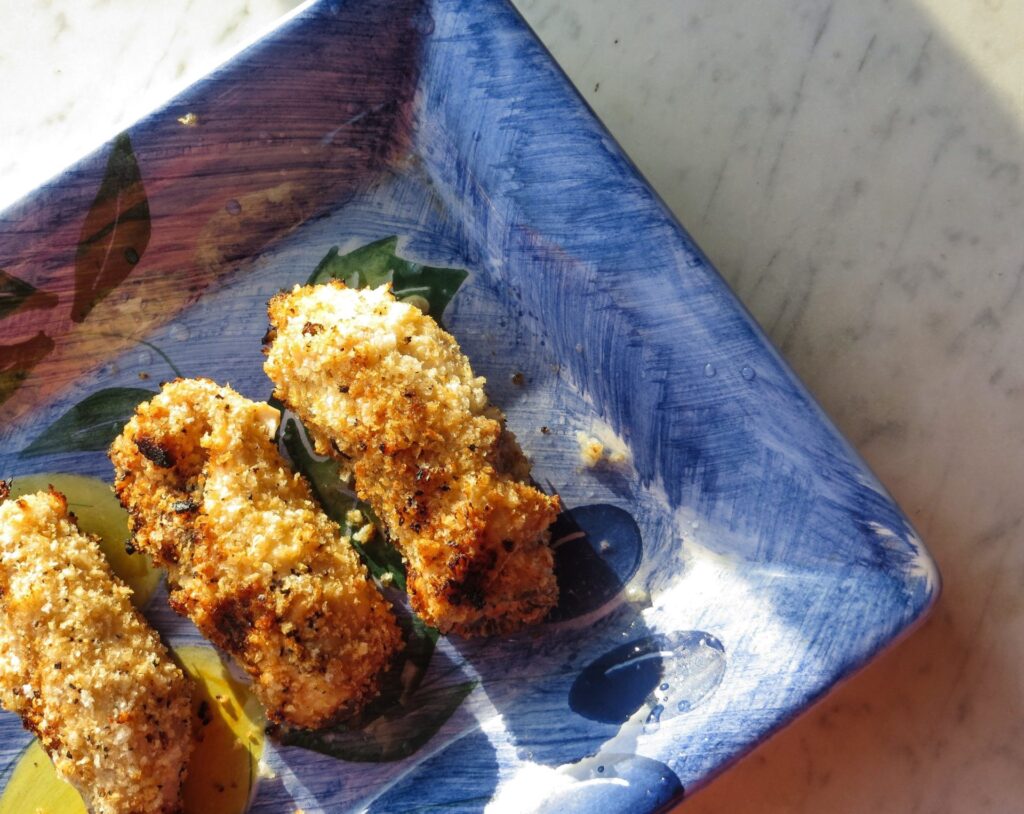
6. Involtini di Pesce Spada (Swordfish Rolls)
Seafood is king in Italy, what with it being an island and all, and Involtini di Pesce Spada are a quintessential Sicilian seafood dish, balancing bold Mediterranean flavors with delicate technique. These thin swordfish slices, wrapped around a stuffing of breadcrumbs, pine nuts, raisins, lemon zest, and herbs, are a hallmark of coastal Sicilian cuisine.
With influences from Greek, Arab, and Spanish traditions, this dish embodies Sicily’s deep maritime history and its ability to transform simple ingredients into something spectacular.
Where:
Trattoria La Scogliera (Messina): Located near the Strait of Messina, this family-run trattoria serves some of the best seafood in Sicily. What’s on offer is fresh, so you’ll have to see what’s there each day, but it is always cooked in a traditional Sicilian style.
Trattoria Il Mare (Catania): A tiny, off-the-beaten-path seafood trattoria where the fish is brought in fresh daily from Catania’s famous fish market.
Trattoria del Vicolo (Lipari): You’ll need a boat. This local favorite is on an island off the coast of Sicily. But trust us, it’s worth it.
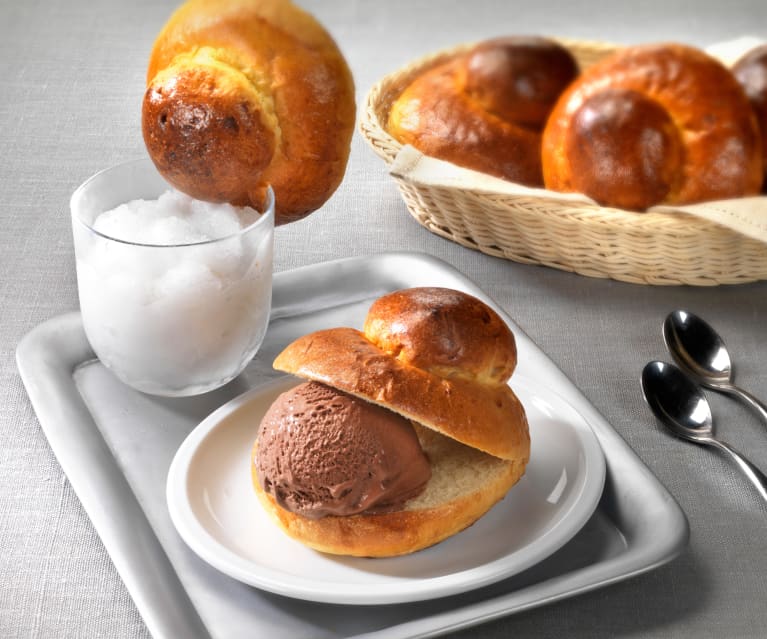
7. Granita con Brioche
Granita, a semi-frozen dessert made from sugar, water, and natural flavorings, is one of Sicily’s most refreshing culinary traditions. Dating back to the Arab rule in the 9th century, it evolved from an ancient method of preserving ice brought down from Mount Etna and mixed with fruit syrups or flower essences. Today, granita remains a breakfast staple in Sicily, often enjoyed with a soft, buttery brioche, locally called brioche col tuppo (named after the traditional Sicilian women’s hairstyle that resembles the bun-like top of the bread).
Flavors vary by region: in Catania, almond granita reigns supreme, while in Messina, coffee-flavored granita paired with whipped cream is the go-to choice. In summer, Sicilians skip the espresso and opt for a chilled cup of granita as their morning caffeine fix.
Don’t be surprised when you see people eating it for breakfast!
Where:
Classic Experience: Caffè Sicilia in Noto, one of Sicily’s most famous pastry shops, is renowned for its almond granita, crafted using slow-roasted Sicilian almonds. This legendary spot has even been featured in the Netflix series Chef’s Table.
Hidden Gem: Bam Bar in Taormina is a tiny, family-run café that serves delicious homemade granita and brioche, definitely eat it outside at their charming patio tables.
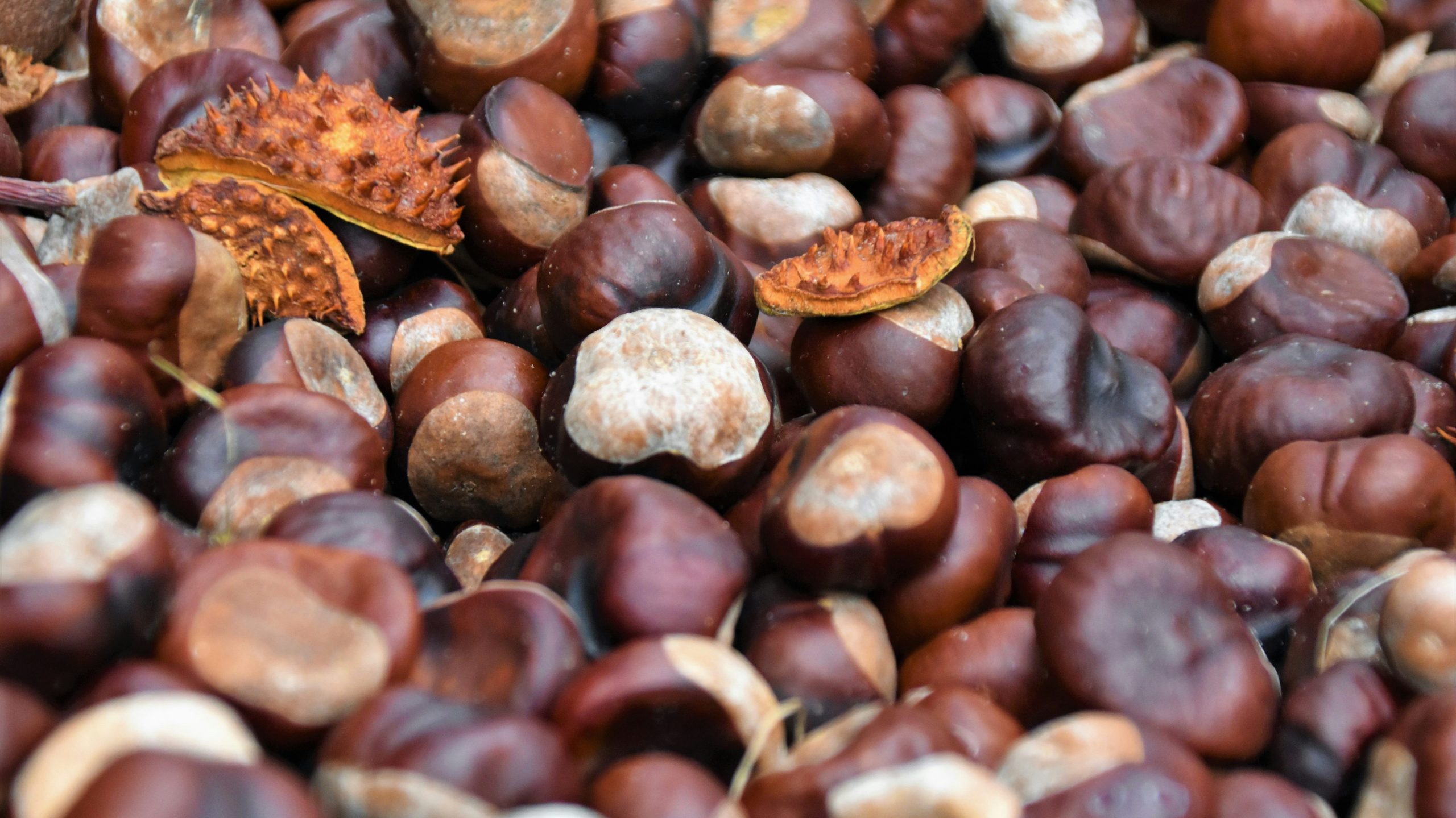
BONUS: Chestnuts
Known as “castagne” in Italian, Sicilian chestnuts have been cultivated for centuries, particularly in the mountainous regions near Mount Etna and the Nebrodi Mountains. These forests, covered in ancient chestnut trees, produce some of the best chestnuts in Italy, with a deep, nutty sweetness and a rich history.
Chestnuts in Sicily are more than just a seasonal snack—they are tied to festivals, traditions, and even survival during tough times. Chestnut trees have grown in Sicily for thousands of years, with some of the oldest trees dating back over 1,000 years. The ancient Greeks and Romans were among the first to cultivate them, using chestnuts as a source of food and medicine.
By the Middle Ages, chestnuts became known as “the bread of the poor”, especially in the mountain villages where wheat was scarce. Chestnut flour was used to bake bread, make pasta, and even thicken soups. This tradition is still alive today in parts of eastern Sicily, where chestnut-based dishes are a winter staple.
Look out for chestnut gelato, traditional chestnut cake made with chestnut flour, olive oil, rosemary, and pine nuts, soups that are leant creaminess from chestnuts, and pastas made from chestnut flour.
Near the Mt Etna region you can even book into a foraging tour and hunt down your own chestnuts and mushrooms!